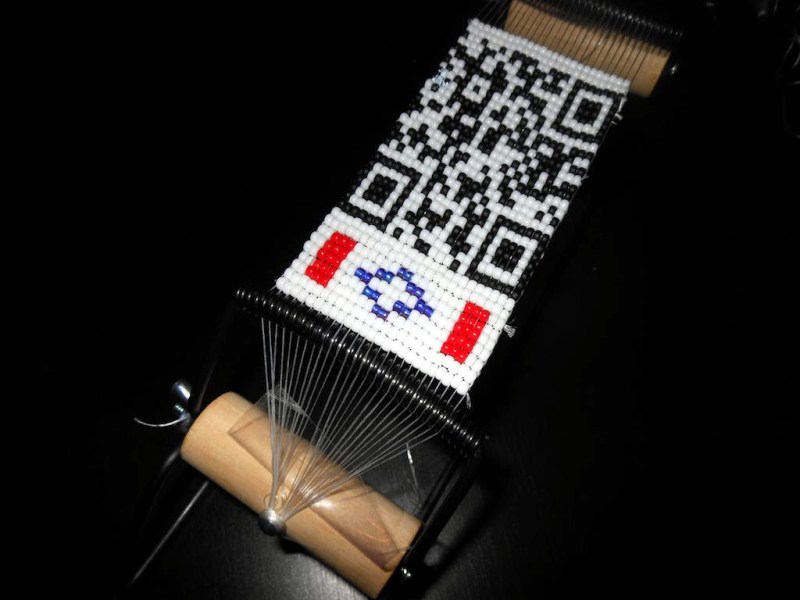For centuries, people have been using patterns to communicate information in an eye-catching way. QR codes are no different, although they require a barcode scanner to decode rather than a knowledge of Navajo Native American history.
November is National Native American Heritage Month, and as part of their celebration, [ngaskins] and their students are making seed bead bracelets with QR codes. When scanned, each QR triggers a story written by the student in the form of an audio file, a video clip, or an animation. [ngaskins] says that this project was inspired by eyeDazzler, a beadwork tapestry made with software that generates Navajo weaving patterns.
The students started by designing their bracelets on graph paper, software, or a virtual loom before getting the seed beads and the tweezers out, and decided whether they would use a static or dynamic QR code. Aside from the aesthetics of beadwork, the bead loom is good for teaching math and computational ideas because the beads are laid out in rows and columns. It’s also a good tool for teaching lines of symmetry.
QR codes can hold quite a bit of information. In fact, there’s enough room in a version 40 QR for an executable version of Snake.
















That’s pretty cool, but it’s a good thing I’m no longer a student. I’d definitely encode an unapproved website into the code. They only way they’d know was to check it, and I could always claim it was a beado (typo with beads?). Lol best worst idea ever.
Does not have to be unapproved. Just use this one:
https://www.youtube.com/watch?v=dQw4w9WgXcQ
Nice concept till you realize the story can be changed, but I guess that’s what we get for living when we do.
I assume v2 will include validation against the blockchain?
It’s only Heritage Month in the US. In Canada we have Indigenous History Month, in June.
Yes, I was just thinking it can’t be National Heritage Month in November, else I would surely have heard about it. Oh wait, I’m part of the 95.75% of people that don’t live in the USA.
Still a cool idea to use beads though!
I think they do something in November every few years to recall the old ways of functioning democratic processes. Some sort of cargo cult behaviour AFAICT.
B^)
Stop being so salty, not everyone can come from the only relevant country, and you were unlucky enough not to. The internet lives in America, everyone else is a guest.
Actually, it’s a weird situation.
When my great, great,great grandmother was born along whatwas later called the Columbia river, there was no US or Canada there. She lived a long time, from 1798 to 1884, seeing the Northwest divided up a few times. And she came into Canada, with her children and grandchildren, in 1870 when Canada expanded to take in Red River.
There are Syilx people in Canada, but also the US. They roamed with the seasons, so the border becomes arbitrary. The distant cousins that have been traced are on around the Colville reservation in Washington state, yet the bulk of Syilx seem to be in Canada.
Native people in the US may say they are better off than in Canada, but those in Canada may say they are better off than in the US. The history goes back long enough that some tradition comes after Europeans came over. Much isthe same between countries, yet there is a subtle difference.
No quiet zone = not a valid qr code. White border is NOT optional.
Yeah, I can’t scan the example above. I guess it would work on pale folks :P
Normally the last step with seed bead designs is to sew it onto a backing material to make it more durable. All they need to do is use a white piece of felt and they’re good.
From one dumb old lady: this is the cutest idea I’ve ever seen! Millions of applications.
At least it’s not a baby Yoda, which was getting beaded a while back.